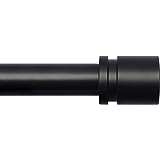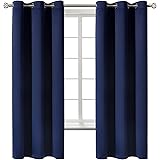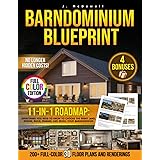The Evolving Kitchen: Exploring the New Cabinetry Design Trend
Are you contemplating a kitchen renovation and wondering about the latest styles? As seen in the accompanying video, a fascinating new kitchen cabinetry design trend is emerging, challenging the long-held notion that cabinets must always extend to the ceiling. This shift is being observed across the design landscape, bringing with it a fresh perspective on functionality and aesthetics. It represents a departure from traditional layouts, offering a unique blend of practicality and visual appeal.
For many years, the standard approach was to install kitchen cabinets that reached the ceiling. This was primarily done to maximize storage space and create a seamless, built-in look. However, as design philosophies evolve, a more nuanced understanding of kitchen spaces is taking hold. The current trend suggests that sometimes, less truly is more, especially when it comes to the upper reaches of your kitchen design.
Why the Shift? Understanding the Reasons Behind This Cabinetry Trend
The movement away from floor-to-ceiling kitchen cabinets is driven by several compelling factors. These considerations often balance aesthetic goals with practical realities, resulting in a more thoughtful and dynamic kitchen environment. Understanding these underlying reasons can help homeowners appreciate the depth of this design choice and how it might be applied in their own homes.
Mastering Tall Ceilings with Kitchen Design
One primary reason for this new approach is the presence of very tall ceilings. In such spaces, traditional full-height cabinets can inadvertently make a room feel top-heavy or disproportionate. When cabinets extend too far upwards, a sense of overwhelming visual weight is often created. It can make the room feel compressed rather than expansive, despite the actual height.
By bringing the cabinetry down a bit, a sense of balance is restored. The visual line of the cabinets is intentionally broken, allowing the eye to appreciate the full expanse of the ceiling. This creates a more harmonious scale within the room, preventing the kitchen from appearing overly imposing. A deliberate pause is introduced, which can soften the overall architectural impact.
Highlighting Exquisite Materials
Another significant factor influencing this trend is the desire to showcase other beautiful materials within the kitchen. When cabinets are kept lower, more wall space is revealed. This provides a perfect opportunity to feature stunning backsplashes or unique wall finishes. Imagine an exquisite slab of natural stone, such as marble or quartz, being carried around the room.
This exposed stone or other chosen material becomes a central design element. It is allowed to breathe and draw attention, rather than being obscured by towering cabinetry. The intention is to celebrate the craftsmanship and natural beauty of these materials, turning them into artistic focal points. This approach elevates the overall sophistication of the kitchen’s aesthetic.
An Homage to English Kitchen Design
The subtle inspiration for this kitchen cabinetry trend often comes from classic English kitchen designs. Historically, English kitchens have featured more freestanding, furniture-like pieces rather than extensive built-in cabinetry. This traditional style often incorporates breaks between units and does not necessarily push cabinets all the way to the ceiling.
Such designs contribute to a more collected, less “fitted” look, reminiscent of a beautifully furnished room rather than a purely utilitarian space. This influence brings a sense of timeless elegance and character to modern kitchens. It suggests a more relaxed, lived-in feel, valuing individual pieces and thoughtful compositions over monolithic structures.
Beyond the Basics: Deeper Insights into this Cabinetry Trend
The decision to install cabinets that do not reach the ceiling extends beyond these initial points. It also opens up a realm of additional design possibilities and practical considerations. This modern approach to kitchen design trend allows for greater creative freedom and addresses various aspects of living in a contemporary home.
Cultivating Visual Lightness and Airiness
One of the most immediate effects of this trend is the creation of a more open and airy atmosphere. When there is a visible gap between the top of the cabinets and the ceiling, the wall space above is emphasized. This helps to prevent a room from feeling enclosed or claustrophobic, especially in smaller kitchens or those with limited natural light.
The visual break allows light to travel more freely and uninterrupted across the upper parts of the room. This can make the entire kitchen feel larger and more inviting. An illusion of increased ceiling height is often achieved, even if the ceilings are not exceptionally tall, contributing to a sense of spaciousness and tranquility.
Embracing Unique Storage and Display Solutions
While some might worry about lost storage space, this trend encourages innovative thinking about how items are stored and displayed. The space above the cabinets can be utilized for decorative elements, such as art pieces, architectural details, or even integrated lighting. Uplighting can be placed on top of the cabinets to cast a soft glow upwards, highlighting the ceiling.
Additionally, this design choice often complements the integration of open shelving. Beautiful dishes, cookbooks, or decorative objects can be displayed on shelves, providing personality and visual interest. It allows for a curated approach to storage, where essential items are neatly tucked away, and aesthetic elements are celebrated openly. This blend of closed and open storage solutions is a hallmark of thoughtful kitchen design.
The Practical Side of Design
From a practical standpoint, cabinets that do not reach the ceiling can offer some surprising benefits. For instance, extremely high cabinet spaces are often difficult to access without a step stool, making them less practical for everyday items. By lowering the cabinets, the most frequently used storage becomes more easily reachable.
Furthermore, without the need for custom-built, extra-tall cabinetry, potential cost savings can be realized in some instances. The focus might shift towards higher quality materials for the visible portions of the cabinets or other design features, rather than investing in inaccessible upper sections. While the space above requires occasional dusting, the overall maintenance is considered manageable for the aesthetic reward.
A Nod to Timeless Elegance
This evolving kitchen cabinetry trend is not merely a fleeting fad; it is being seen as a move towards more timeless and sophisticated design principles. By allowing architectural elements and quality materials to shine, kitchens can achieve a classic appeal that transcends specific periods. It emphasizes craftsmanship and the inherent beauty of the chosen finishes.
The design choice creates kitchens that feel bespoke and intentionally designed, rather than simply factory-fitted. It reflects a growing appreciation for individuality and character in home interiors. This thoughtful approach ensures that a kitchen designed with this philosophy will remain elegant and relevant for many years to come, offering enduring charm and functionality.











